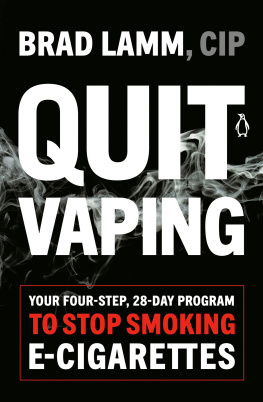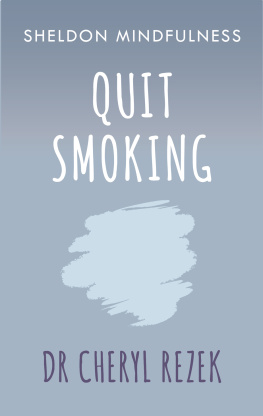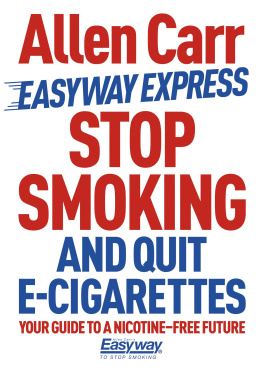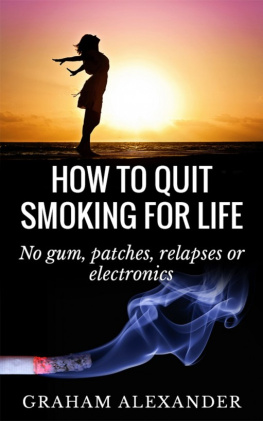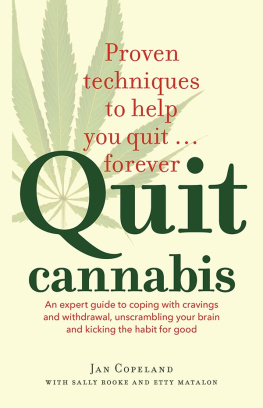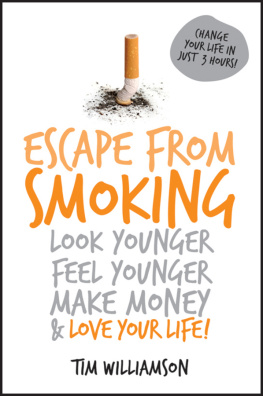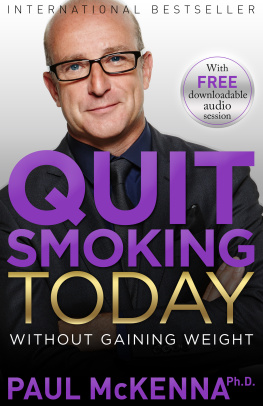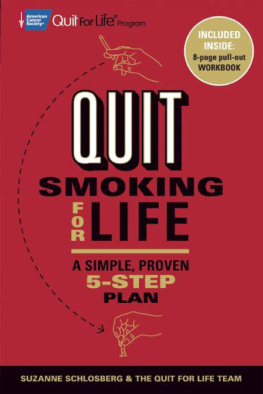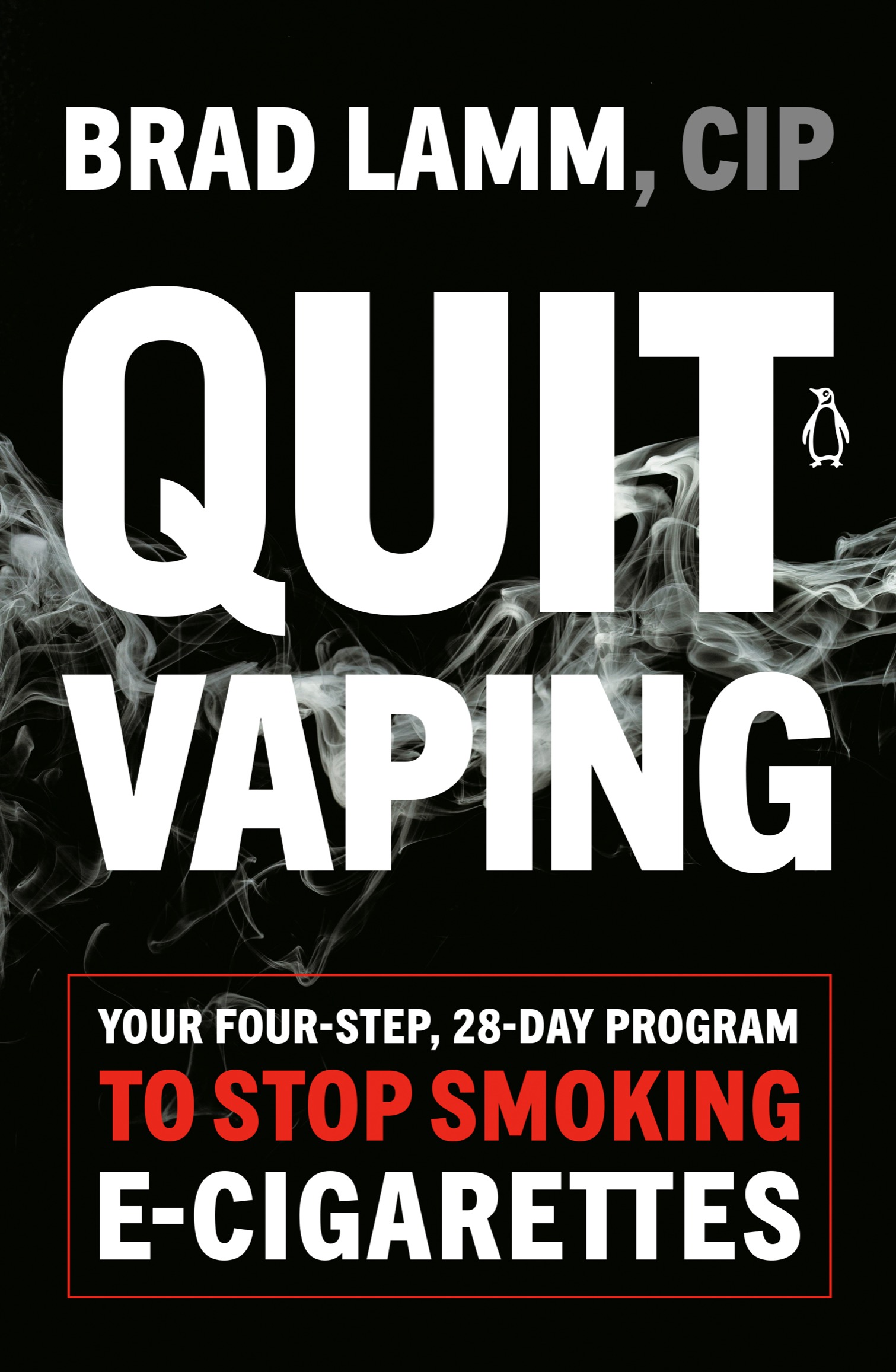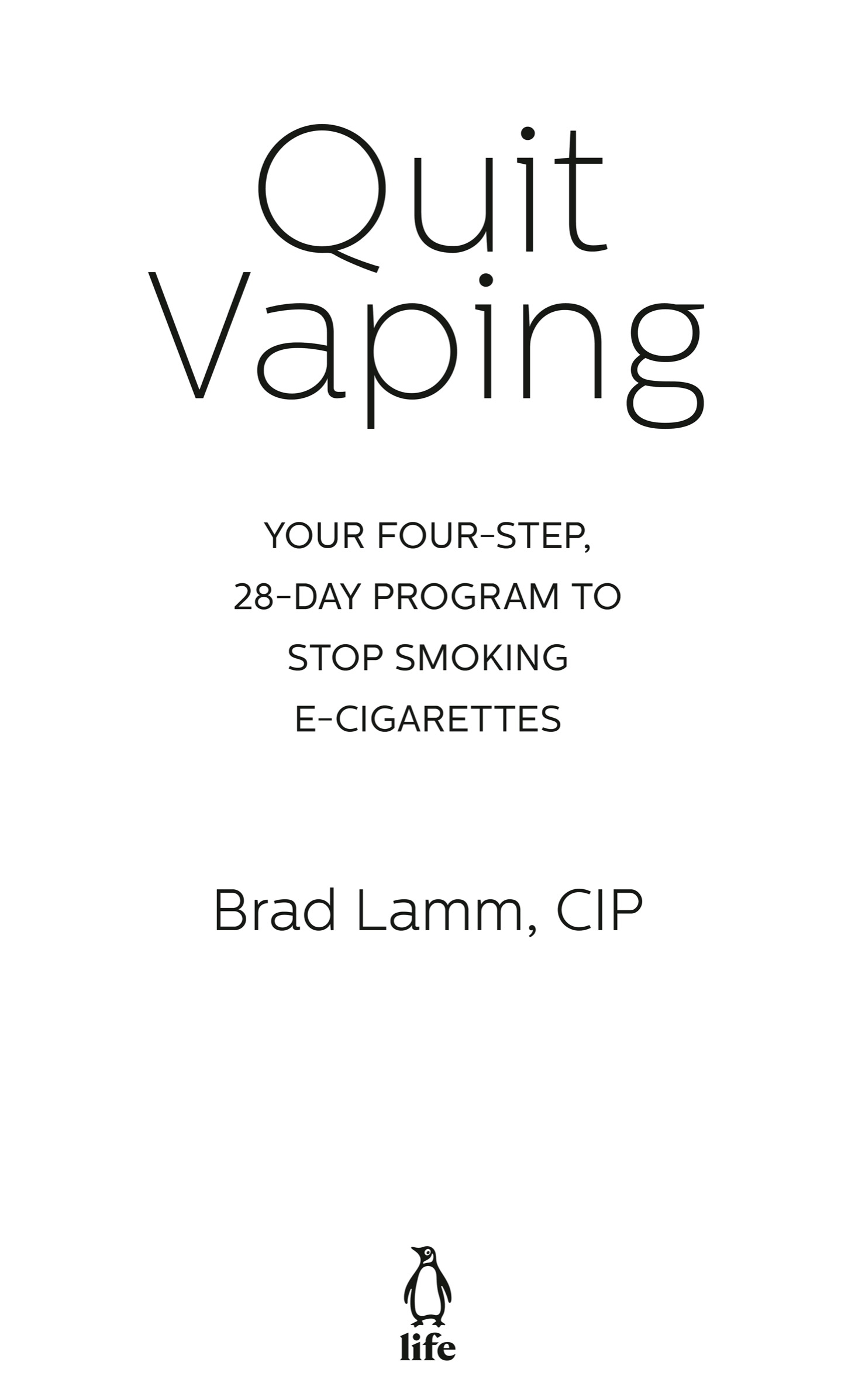PENGUIN LIFE
Quit Vaping
Brad Lamm, CIP, is an interventionist best known for helping people make life-enhancing change on The Doctors, Dr. Phil, and Today. He has managed more than a thousand interventions, visited hundreds of treatment facilities across the globe, presented before Parliament in Britain, served on the board of the Association of Intervention Specialists, collaborated with the most knowledgeable recovery treatment specialists, and worked at the state level to reform treatment options to various communities. He is the author of How to Help the One You Love and Just 10 Lbs., and in 2012 he founded Breathe Life Healing Center, which uses industry-leading techniques to provide powerful rehabilitation for body, mind, and spirit. He lives with his family in Los Angeles, California.
ALSO BY BRAD LAMM
How to Change Someone You Love: Four Steps to Help You Help Them ( published in paperback as How to Help the One You Love: A New Way to Intervene and Stop Someone from Self-Destructing)
Just 10 Lbs.: Easy Steps to Weighing What You Want (Finally)
PENGUIN BOOKS
An imprint of Penguin Random House LLC
penguinrandomhouse.com
First published in Penguin Books 2020
This edition published 2022
Copyright 2020 by Brad Lamm
Penguin Random House supports copyright. Copyright fuels creativity, encourages diverse voices, promotes free speech, and creates a vibrant culture. Thank you for buying an authorized edition of this book and for complying with copyright laws by not reproducing, scanning, or distributing any part of it in any form without permission. You are supporting writers and allowing Penguin Random House to continue to publish books for every reader.
A Penguin Life Book
Library of congress cataloging-in-publication data
Names: Lamm, Brad, author.
Title: Quit vaping : your four-step, 28-day program to stop smoking e-cigarettes / Brad Lamm, CIP.
Description: New York : Penguin Books, [2020] | Includes bibliographical references.
Identifiers: LCCN 2019058679 (print) | LCCN 2019058680 (ebook) | ISBN 9780143135876 (paperback) | ISBN 9780525507451 (ebook)
Subjects: LCSH: Vaping. | Nicotine addictionTreatment. | Electronic cigarettes. | Smoking cessation.
Classification: LCC RC567 .L36 2020 (print) | LCC RC567 (ebook) | DDC 616.86/506dc23
LC record available at https://lccn.loc.gov/2019058679
LC ebook record available at https://lccn.loc.gov/2019058680
Cover design: Matt Vee
Cover image: YS Graphic / Getty Images
Designed by Chris Welch, adapted for ebook
While the author has made every effort to provide accurate telephone numbers, internet addresses, and other contact information at the time of publication, neither the publisher nor the author assumes any responsibility for errors or for changes that occur after publication. Further, the publisher does not have any control over and does not assume any responsibility for author or third-party websites or their content.
Neither the publisher nor the author is engaged in rendering professional advice or services to the individual reader. The ideas, procedures, and suggestions contained in this book are not intended as a substitute for consulting with your physician. All matters regarding your health require medical supervision. Neither the author nor the publisher shall be liable or responsible for any loss or damage allegedly arising from any information or suggestion in this book.
pid_prh_5.5.0_140348893_c0_r2
Contents
Introduction
A new epidemic is killing people.
In America, the first death attributed to vaping occurred on August 23, 2019, in Illinois. The states department of public health announced the sad news, but in order to protect the persons privacy, officials didnt release the persons name, age, gender, or exact location. Since then, forty more people have died from vaping-related illness. The youngest was just thirteen years old, which underscores the devastating effects that e-cigarettes are having on teenagers. In fact, most victims of vaping-related illness are younger than thirty-five.
The media reports alarming stories, almost daily, about the vaping crisis. Damage to vapers lungs has become so prevalent that the Centers for Disease Control and Prevention (CDC) has coined a new acronym for it: EVALI, or e-cigarette, vaping-associated lung injury. Instances of EVALI are surging. As of February 2020, the CDC has confirmed more than 2,700 cases of vaping-related lung injury in addition to the reported deaths.
After several days of high fever and flulike symptoms, people suffering from EVALI rush into emergency rooms with shortness of breath and difficulty breathing. One twenty-one-year-old man in Utah had such severe lung damage from vaping that even a ventilator couldnt help him breathe. Doctors had to connect him to a machine that pumped oxygen directly into his bloodstream to keep him alive. Closer examination of his lung fluid revealed that fat had clogged his white blood cellsnot from the chemicals that he had vaped, but likely from the breakdown of his own lung tissue. Doctors thought that he might die, but thankfully he survived and, after a two-week stay in the hospital, went home.
Vapers are dying, and their lungs are failing, but medical officials still dont know what lasting damage and other health problems vaping will cause in the long run.
So how did we get here?
Smoking Tobacco
It all starts with tobacco, a plant that contains large amounts of the nicotine chemical. The native people of Mesoamerica and South America discovered tobacco and the physical results of smoking its dried leaves, and Native Americans throughout the New World often used it in medical and ceremonial contexts. Europeans learned of it from them in the early 1500s and, from there, gradually introduced it to the rest of the world.
In 1559, Jean Nicotthe Frenchman from whose name the word nicotine derivesintroduced tobacco to France, and a dozen or so years later English explorers introduced it to their own homeland. Walter Raleigh brought samples from Virginias Roanoke Colony to the court of Queen Elizabeth I, but not everyone believed in this captivating new plant. In 1604, just one year into his reign, King James I of England called smoking tobacco a custom loathsome to the eye, hateful to the nose, harmful to the brain, dangerous to the lungs, and in the black, stinking fume thereof, nearest resembling the horrible Stygian smoke of the pit that is bottomless.
Despite those protestations, the burgeoning tobacco trade helped the English support Jamestown, their first permanent settlement in the New World. In 1612, John Rolfe became the first European settler in North America to grow tobacco as a cash crop, and the plant soon became known as the golden weed. King James I wasnt the only person who recognized the dangers of smoking this enticing new plant, however. Shortly thereafter, a sultan of the Ottoman Empire and an emperor of China both issued edicts banning smoking it. Powerful leaders knew centuries before the rise of modern medicine that smoking tobacco posed a major health risk to their people.
Lung cancer deaths related to smoking increased sharply in 1965 and continued through the 1990s. What was once touted as safe by doctors was killing untold numbers. The backlash against cigarette makers resulted in the Master Settlement Agreement of November 1998, brokered between the four largest tobacco companies in America and the attorneys general of forty-six states. Its stipulations included that those companies had to curb or cease certain advertising practices as well as to pay the states

